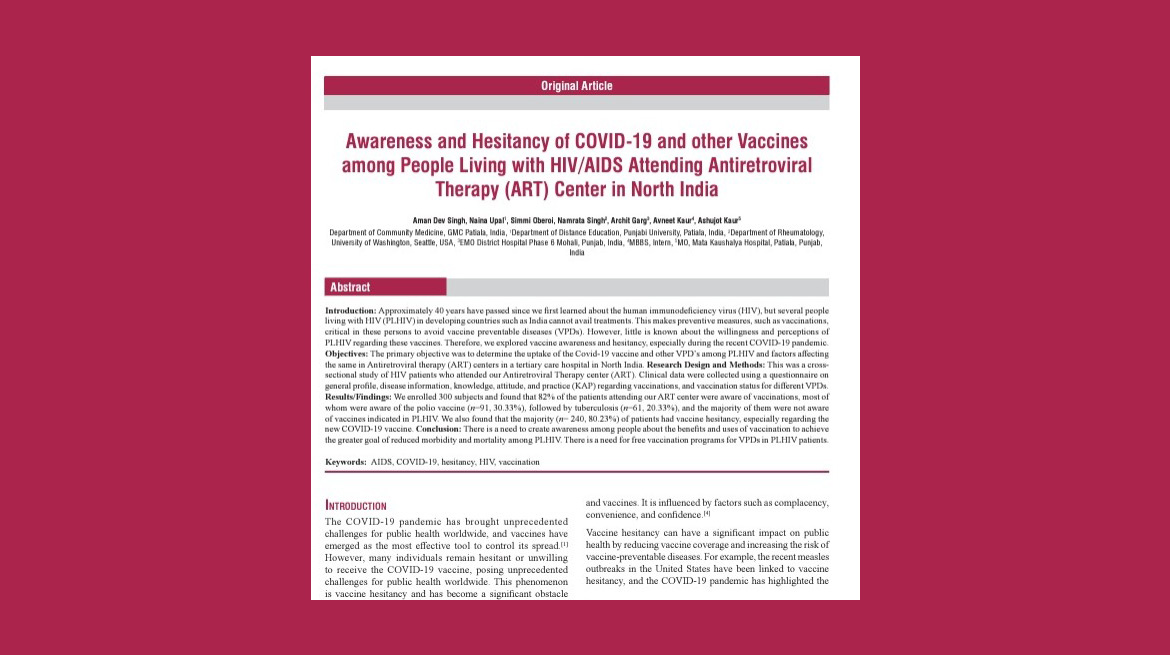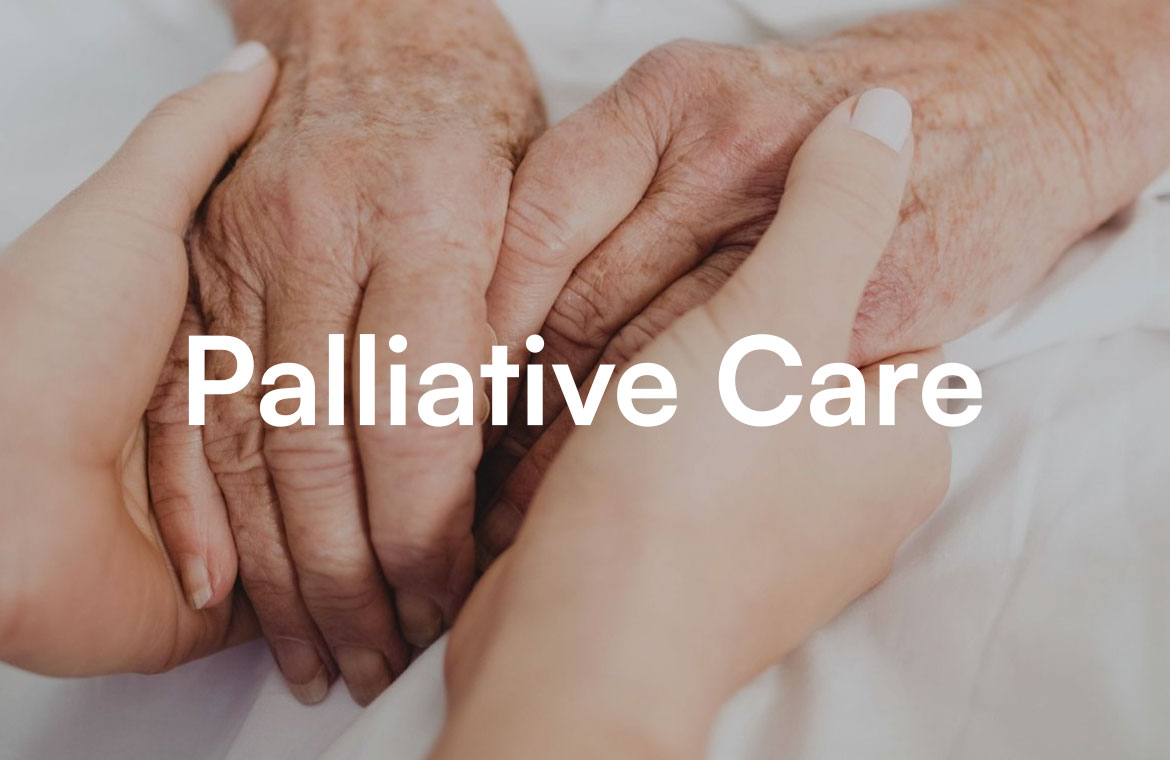10.4103/ijcm.ijcm_901_22
Introduction
The COVID-19 pandemic has necessitated unprecedented global public health efforts, especially regarding vaccination. For individuals living with HIV/AIDS (PLHIV), vaccines play an essential role in preventing both common and severe diseases. However, vaccine hesitancy remains a significant challenge, particularly among this vulnerable population. In a study conducted at an Antiretroviral Therapy (ART) center in North India, researchers sought to understand the level of awareness, uptake, and hesitancy towards COVID-19 and other vaccines among PLHIV. The findings offer insights into the barriers faced by PLHIV and emphasize the need for targeted interventions.
Study Overview and Objectives
The cross-sectional study was conducted at a public tertiary care hospital in North India. It enrolled 300 HIV-positive patients who visited the ART center. The primary objectives were to determine the awareness levels regarding vaccines, measure the uptake of COVID-19 and other vaccines, and identify factors contributing to vaccine hesitancy among PLHIV. Data were collected through structured questionnaires focusing on the participants’ knowledge, attitudes, and practices (KAP) related to vaccination, and their overall vaccination status.
Key Findings
- General Awareness and Knowledge Gaps: The study revealed that 82% of the participants were aware of vaccinations, with the highest awareness being about vaccines for polio (30.33%) and tuberculosis (20.33%). However, awareness about vaccines specifically indicated for PLHIV, such as pneumococcal and hepatitis vaccines, was notably low. Despite the participants’ general awareness of vaccines, only 19.33% had taken the COVID-19 vaccine, and of these, less than 6% had completed the full dose schedule.
- Vaccine Hesitancy and Its Causes: An alarming 80.66% of the participants had not received the COVID-19 vaccine. The most common reasons cited for this hesitancy included fear and anxiety associated with potential side effects (47.3%), doubts regarding the vaccine’s efficacy (20.33%), and misinformation, such as beliefs that the vaccine might worsen their HIV condition or cause infertility. Additionally, 16 participants (5.3%) expressed reluctance due to the inconvenience of visiting healthcare centers frequently, and some (2%) cited an unwillingness to wait in long queues.
- Socioeconomic Barriers: The study highlighted that most of the participants were from lower socioeconomic backgrounds, with 96.5% living below the poverty line. This economic constraint was a major factor behind vaccine hesitancy, as many participants were unwilling to pay for vaccines not covered by government programs. Although 83% recognized the importance of vaccination, 58% were unwilling to pay for vaccines that were not freely available.
- Role of Public Health Programs: The study noted the effectiveness of vaccination campaigns like the Pulse Polio program, which was well-recognized by the participants. However, the researchers emphasized that similar strategies should be adopted to improve vaccine awareness and uptake among PLHIV. Despite significant efforts, there remains a gap in targeted awareness campaigns and education regarding vaccines that are crucial for individuals with compromised immune systems, such as those living with HIV.
- Misinformation and Misconceptions: Misinformation played a critical role in shaping vaccine hesitancy. The study found that 15% of participants believed that vaccines could cause serious harm, including death. Others held misconceptions about vaccines being “hot” or “cold” in nature, affecting their health negatively. A significant proportion (85.4%) believed that having HIV would render vaccines ineffective, reflecting a critical gap in patient education.
Discussion and Implications
The study’s findings align with global patterns of vaccine hesitancy but also bring unique insights specific to PLHIV in India. The combination of misinformation, fear, and socio-economic barriers presents a formidable challenge to achieving high vaccination rates among this population. The hesitancy is exacerbated by factors such as distrust in the healthcare system, fear of side effects, and low perceived susceptibility to diseases other than HIV. The study also found that peer influence, health worker recommendations, and media outreach had limited impact on changing participants’ attitudes toward vaccination.
These findings call for a multi-pronged approach to address vaccine hesitancy in PLHIV:
- Targeted Education and Awareness Programs: There is an urgent need for health education campaigns that focus on correcting misconceptions and providing clear, evidence-based information on the benefits and safety of vaccines. Engaging community leaders, healthcare workers, and peer educators could enhance the reach and effectiveness of these initiatives.
- Economic Support and Policy Interventions: Given the significant economic barriers, integrating vaccination programs with existing ART services and expanding the Universal Immunization Program (UIP) to cover vaccines for PLHIV could improve accessibility. Policymakers should consider offering vaccines free of charge for PLHIV, as financial constraints were a major deterrent.
- Addressing Socio-Cultural Beliefs: Strategies to counter socio-cultural beliefs and misconceptions should be culturally sensitive and context-specific. Interactive platforms that allow patients to ask questions and address their fears could be more effective than one-way communication channels.
- Strengthening Public Health Infrastructure: Improving the convenience of vaccine access, such as reducing wait times and enhancing service delivery at government centers, can help mitigate some logistical concerns. The study suggests that replicating the success of programs like Pulse Polio could be instrumental in promoting vaccine acceptance.
Conclusion
This study offers valuable insights into the complex interplay of factors contributing to vaccine hesitancy among PLHIV in India. Although general awareness about vaccination is relatively high, specific knowledge about vaccines critical for PLHIV is lacking. The findings highlight the need for comprehensive public health strategies that combine education, economic support, and infrastructural improvements. By addressing both the practical and psychological barriers to vaccination, healthcare systems can better protect vulnerable populations like PLHIV from preventable diseases, including COVID-19.
References
- Singh, A. D., Upal, N., Oberoi, S., et al. “Awareness and Hesitancy of COVID-19 and Other Vaccines Among People Living with HIV/AIDS Attending Antiretroviral Therapy (ART) Center in North India.” Indian Journal of Community Medicine, 2023.
- Dubé, E., et al. “Vaccine Hesitancy: An Overview.” Human Vaccines & Immunotherapeutics, 2013.
- Wouters, O. J., et al. “Challenges in Ensuring Global Access to COVID-19 Vaccines: Production, Affordability, Allocation, and Deployment.” The Lancet, 2021.
- Menni, C., et al. “COVID-19 Vaccine Waning and Effectiveness: A Community Study from the ZOE COVID Study.” Lancet Infectious Diseases, 2022.
- Larson, H. J., et al. “Understanding Vaccine Hesitancy Around Vaccines and Vaccination from a Global Perspective: A Systematic Review.” Vaccine, 2020.




